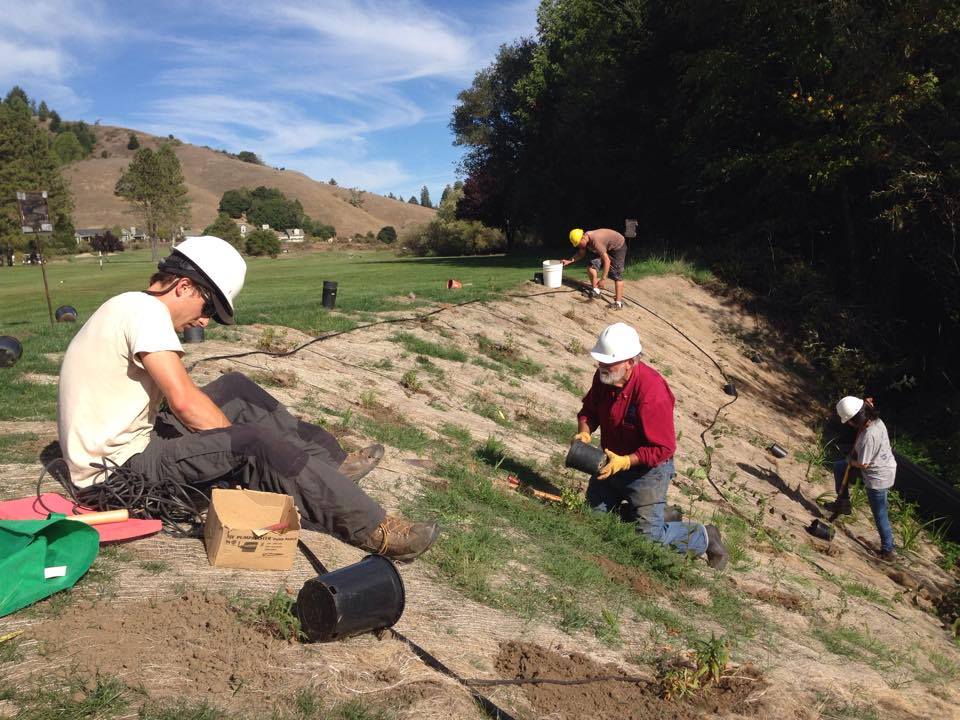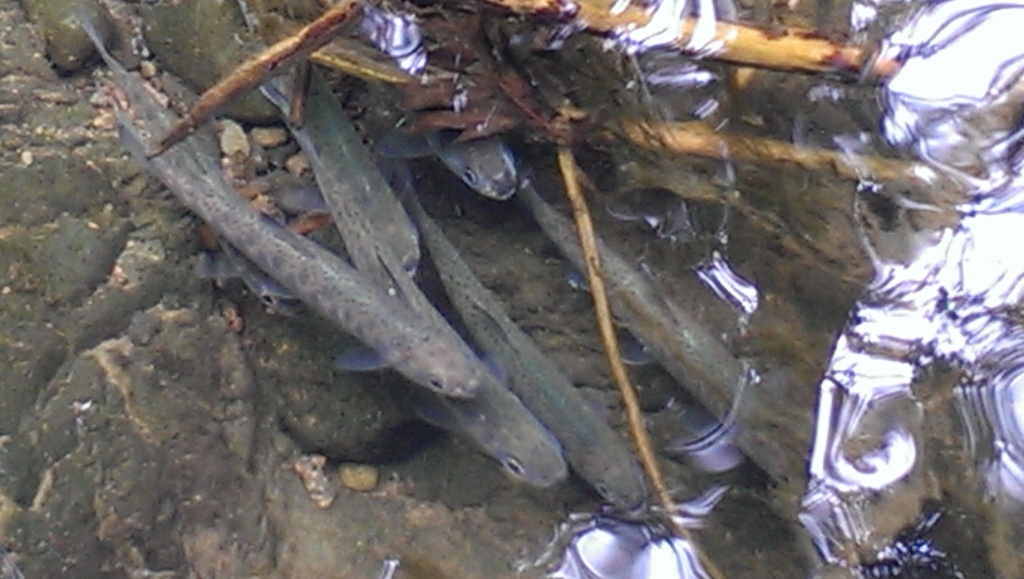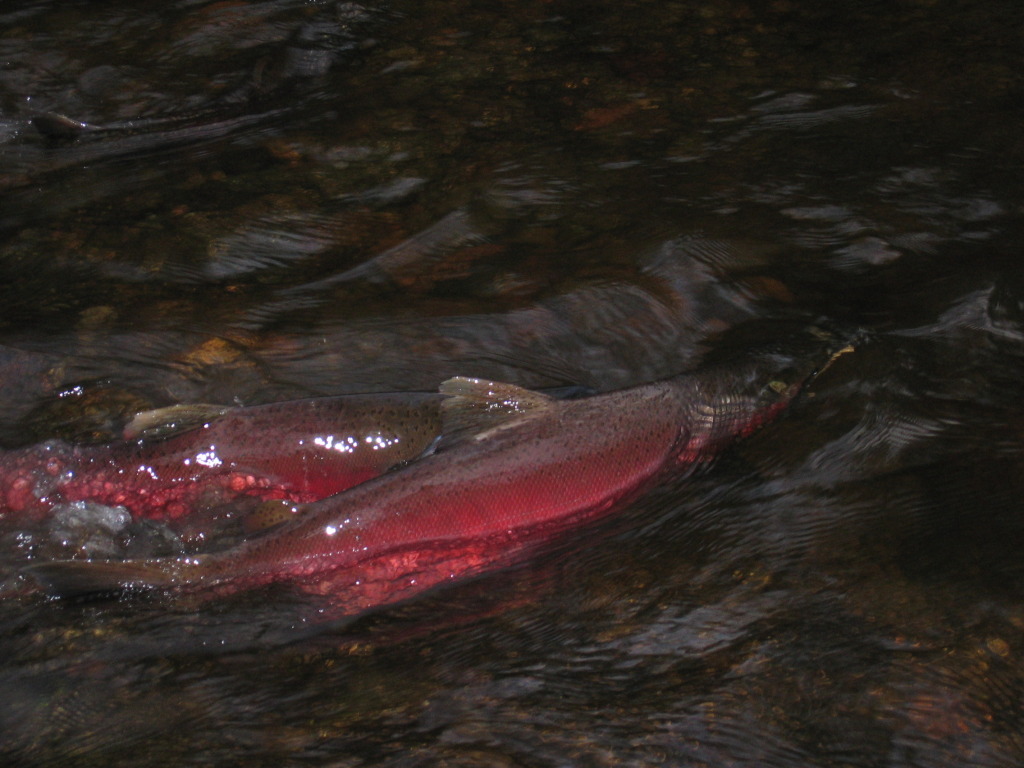West Marin has gotten a lot of rainfall this month, and Lagunitas Creek is gushing.
These should be good conditions for migrating coho salmon, and you could even say the best in years given the drought. But there have been very few coho egg nests this year. The latest report tallied only about 50 redds, the depressions in a creek bed that females fill with pockets of eggs. The average year sees about 150 redds (from which two fish, a male and a female usually make it), although that number itself reflects a 16-year span that’s so low as to be unsustainable for the coho, which used to thrive in Lagunitas’ ample habitat long before development reigned in the creek.
While the December rains have made upstream migration possible for adults, they first have to become adults, and it’s this other end of the salmon’s life span that’s also critical, says Todd Steiner, a biologist and founder of the nonprofit Salmon Protection and Watershed Network (SPAWN).
“People associate the fish with lots of rain. That’s when you see them and that’s the fun part of their life cycle for humans to watch,” Steiner says. “And people forget that the juvenile fish have to survive a year and a half in that stream [before migrating to the ocean].”
Surviving Lagunitas Creek is no easy task for juvenile salmon. They were probably getting lashed around quite severely during the recent torrential rains, as there’s little left of the historic floodplains where they could seek shelter in calmer waters, says Steiner.
VIDEO: A female salmon digs a redd to lay her eggs.
SPAWN has been working for 15 years to restore habitat for the coho within the Lagunitas Creek watershed and to monitor the population. But it’s an uphill battle to save these endangered fish. Homes hem in the creek, preventing waters from expanding during heavy rainstorms. Lawns extend right up to the creek banks, making waters too warm for the cold-loving salmon. Failed septic systems and other polluted runoff dirty the creek and its tributaries.
In recent years, with the Bay Area economy revving up, the development pressure has only intensified. The San Geronimo Valley, through which the Lagunitas Creek watershed flows, has been going the way of much of Marin with mini-mansions replacing older, smaller homes and turning this section of West Marin, only 28 miles from the Golden Gate Bridge, into a bedroom community for city workers. Steiner doesn’t think that trend will bring much good to the salmon, or to the people of West Marin for that matter.

So, SPAWN has come up with a new twist on habitat restoration of the creek — gradually buy up about a hundred homes along the mainstem of the creek as they go up for sale and minimize the human footprint. Steiner says the properties would be separated from the homes, with the homes sold as affordable housing and the land restored to better habitat conditions under the control of a community land trust.
“You couldn’t cut down a bunch of trees to put in a playhouse, but there would be areas where people could have what people have in their yards, like a picnic table,” Steiner says. “But we would reforest it as much as possible — that’s the ultimate goal.”
Conservation easements haven’t worked all that well on these creekside properties because in many cases they are so small, on the order of several hundred square feet, says Steiner. Many were originally built as summer cabins and eventually became permanent residences. Conservation easements usually work by way of tax breaks, but the savings from such a small parcel brings little incentive to combat the negative aspect of losing control of a backyard, Steiner says.
“If we own the property it’s not an issue,” says Steiner. “It’s an incredibly unique idea for people to get started in home ownership and you get to live in such an amazing place.”
Homeowners could sell at a profit, but homes would be price controlled to keep them affordable in perpetuity. Besides the habitat work, SPAWN, or the land trust, would upgrade the homes to make them more energy efficient and repair leaking septic systems.

Steiner came upon the idea through his membership with the Community Land Trust of West Marin (CLAM), an organization that creates affordable housing options for West Marin residents. CLAM introduced him to the concept of separating the land from the house, and putting the land into a land trust. But while CLAM, like most land trusts, puts the emphasis on the creation of affordable housing, SPAWN would make what happens to the land — namely the habitat restoration — the focal point.
“It fits very well because if you buy a property and you don’t have total control over your land it should be cheaper and it should be more affordable,” says Susan Scott, a CLAM board member. “I think it’s a great idea. Getting funding is going to be tricky.”
Indeed, SPAWN still has a long way to go. At the moment, the organization is fundraising for a business feasibility plan to work out the details on the cost and duration of the program. Steiner figures each property would cost a half million dollars or more to buy.
“We could be talking about tens of million so dollars, but not all at once,” he says. “With a few million dollars a year, we could do four or five of these projects and in 15 to 20 years we could have a significant amount.”
But though fundraising is often hard, SPAWN has the advantage of spanning many interests. It’s not often that environmental stewardship and affordable housing are said together in one breath.






